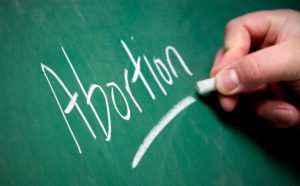New Guidelines On Abortion Care : WHO

The World Health Organization (WHO) presented new guidelines on abortion care. These, it claimed, would prevent more than 25 million unsafe abortions annually.
- The new guidelines include recommendations on many simple interventions at the primary care level that improve the quality of abortion care provided to women and girls.
- The new guidelines will support interested countries to implement and strengthen national policies and programmes related to contraception, family planning and abortion services, helping them to provide the highest standard of care for women and girls.
Global Status of Abortions:
- Globally, between 13,865 and 38,940 lives are lost yearly due to the failure to provide safe abortion.
Developing countries bear the burden of 97% of unsafe abortions. - The proportion of abortions that are unsafe is also significantly higher in countries with highly restrictive abortion laws than in those with less restrictive laws.
- Over half (53.8%) of all unsafe abortions occur in Asia, the majority of those in south and central Asia. A quarter (24.8%) occur in Africa, mainly in eastern and western Africa and a fifth (19.5%) in Latin America and the Caribbean.
- Abortion rates were highest in low-income countries with the most legal restrictions to abortion care.
- There was also an increase of 12% in the number of abortions in countries with legal restrictions on the procedure, while it declined slightly in countries where abortion is broadly legal.
New Guidelines by the WHO:
- These include task sharing by a wider range of health workers; ensuring access to medical abortion pills, which mean more women can obtain safe abortion services and making sure that accurate information on care is available to all those who need it.
- It also includes the recommendations for the use of telemedicine, which helped support access to abortion and family planning services during the Covid-19 pandemic.
- It also recommend removing medically unnecessary political barriers to safe abortion, such as criminalisation, mandatory waiting periods before receiving a requested abortion, third-party authorisation for abortion, restrictions on which health workers can provide abortion services.
- Such barriers can lead to critical delays in accessing treatment and put women and girls at greater risk of unsafe abortion, stigma and health complications, while increasing barriers to education and their ability to work.
- Restricting access to abortions does not reduce the number of abortions that take place. In fact, restrictions are more likely to push women and girls into unsafe practices.
- A person’s environment plays a crucial role in shaping their access to care and influencing their health outcomes.
- An enabling environment is the foundation of quality comprehensive abortion care.
- The three cornerstones of an enabling environment for abortion care are:
- Respect for human rights including a supportive framework of law and policy.
- Availability and accessibility of information.
- A supportive, universally accessible, affordable and well functioning health system.




